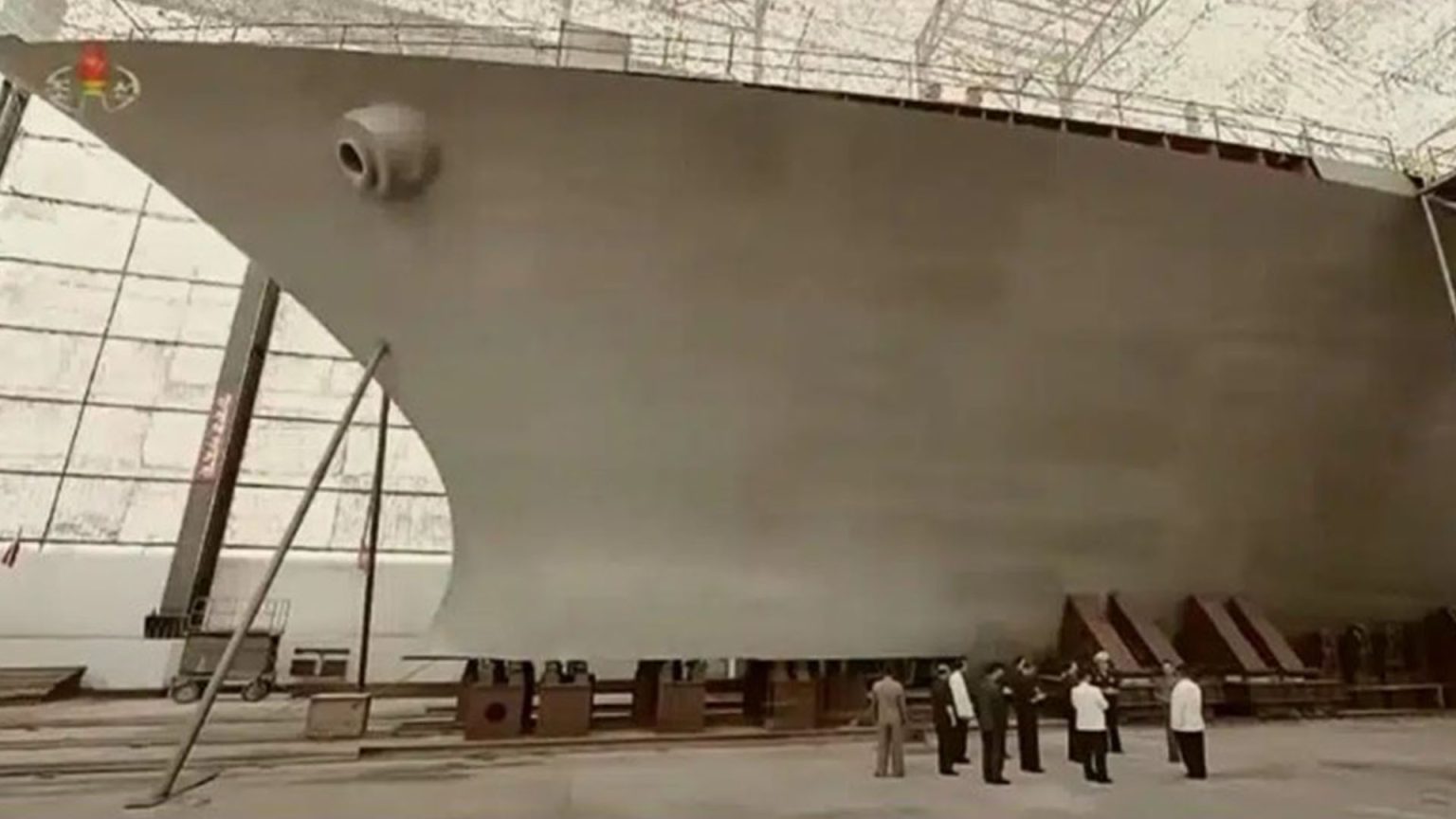North Korea’s unveiling of its largest-ever naval destroyer marks a significant escalation in its military capabilities, raising concerns about regional stability and the potential for further arms proliferation. Images released by North Korean state media depict a vessel of impressive size, estimated to be around 330 feet long and with a beam of approximately 50 feet. Analysts believe its displacement will exceed 3,600 tonnes, dwarfing the current largest warship in the North Korean navy, a 1,360-tonne frigate. This new destroyer is speculated to be under construction at the Nampho Dockyard on North Korea’s west coast.
The most striking feature of the new warship is a large aperture at the bow, believed to be intended for a vertical launch system (VLS). Such a system would significantly enhance North Korea’s offensive capabilities, enabling the launch of guided cruise missiles and potentially other advanced weaponry. The potential inclusion of a VLS suggests a desire to project power further afield and engage targets at greater distances. This development echoes similar advancements in other areas of North Korea’s military development, particularly its ballistic missile program, raising concerns about the regime’s long-term strategic goals. The presence of Kim Jong-un at the shipyard, inspecting the vessel’s construction, underscores the importance of this project to the regime.
Experts draw parallels between the North Korean destroyer and the Russian Admiral Grigorovich-class frigate, a modern and capable warship in the Russian Navy. This resemblance fuels speculation about potential collaboration between North Korea and Russia, particularly given Kim Jong-un’s visit to a Russian naval base in Vladivostok in September 2023. Such cooperation, if confirmed, could have significant implications for regional security, potentially providing North Korea with access to advanced Russian naval technology and expertise. This aligns with broader concerns about growing ties between the two nations, including reported North Korean military support for Russia’s war in Ukraine.
The construction of this new destroyer, while a significant step, is likely a long-term project. Analysts estimate that it could take up to a decade for the warship to be fully completed and operational. This extended timeframe reflects the complexity of such an undertaking and the challenges North Korea faces in terms of resources and technological expertise. However, the commitment to such a project demonstrates a clear intention to modernize and expand the North Korean navy, potentially altering the naval balance of power in the region.
This naval development occurs within a broader context of increasing tensions on the Korean peninsula and growing concerns about North Korea’s military ambitions. Kim Jong-un’s simultaneous unveiling of a new main battle tank, touted as the “world’s most powerful,” further emphasizes the regime’s focus on military advancement. These displays of military might are often interpreted as a response to ongoing joint military exercises conducted by the United States and South Korea, which North Korea views as provocative.
The emergence of this new destroyer adds another layer of complexity to an already volatile regional security landscape. It raises questions about North Korea’s intentions, the extent of its cooperation with Russia, and the potential consequences for regional stability. The international community will be closely monitoring this development, as it represents a significant advancement in North Korea’s naval capabilities and a potential shift in the regional balance of power. The potential for this new warship to carry advanced missile systems also raises concerns about arms proliferation and the potential for escalating tensions in the region.











